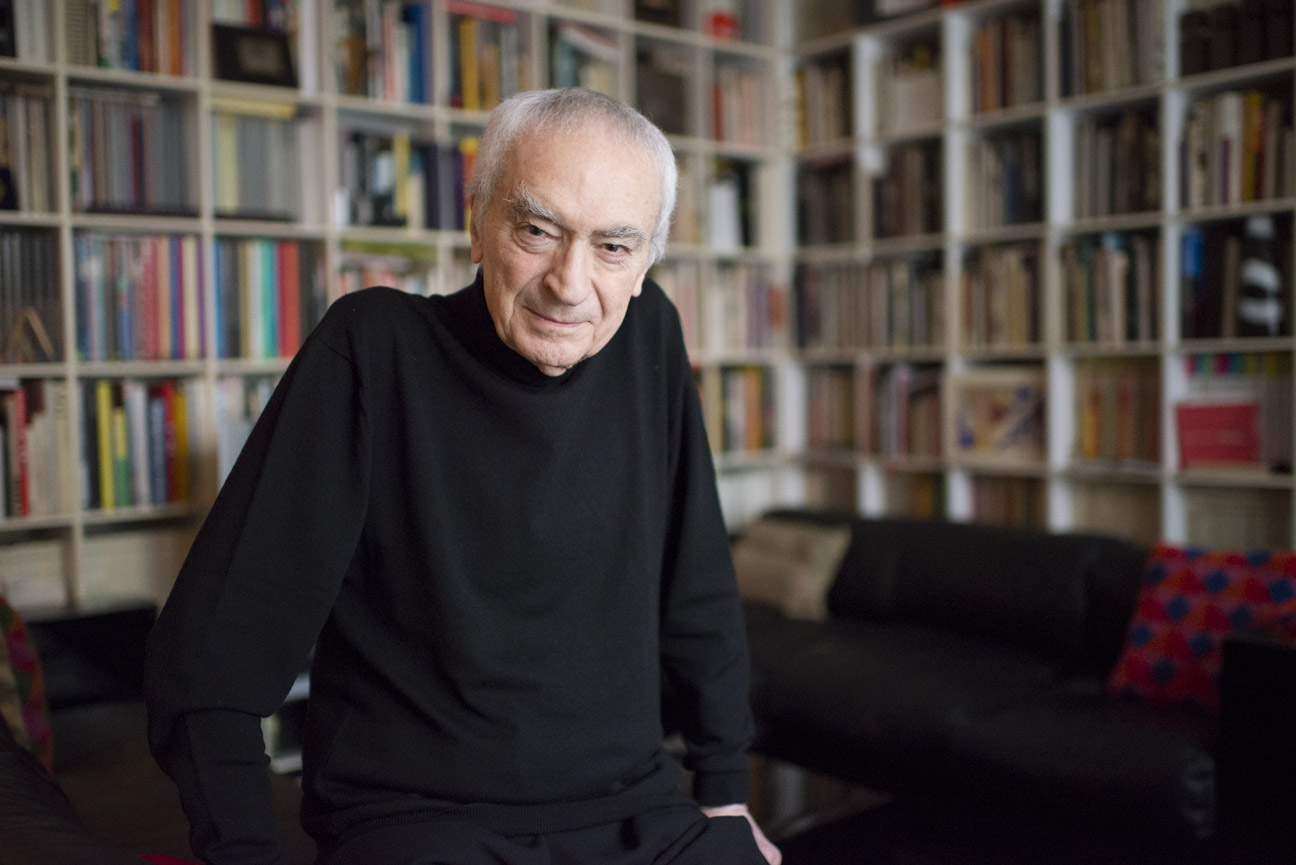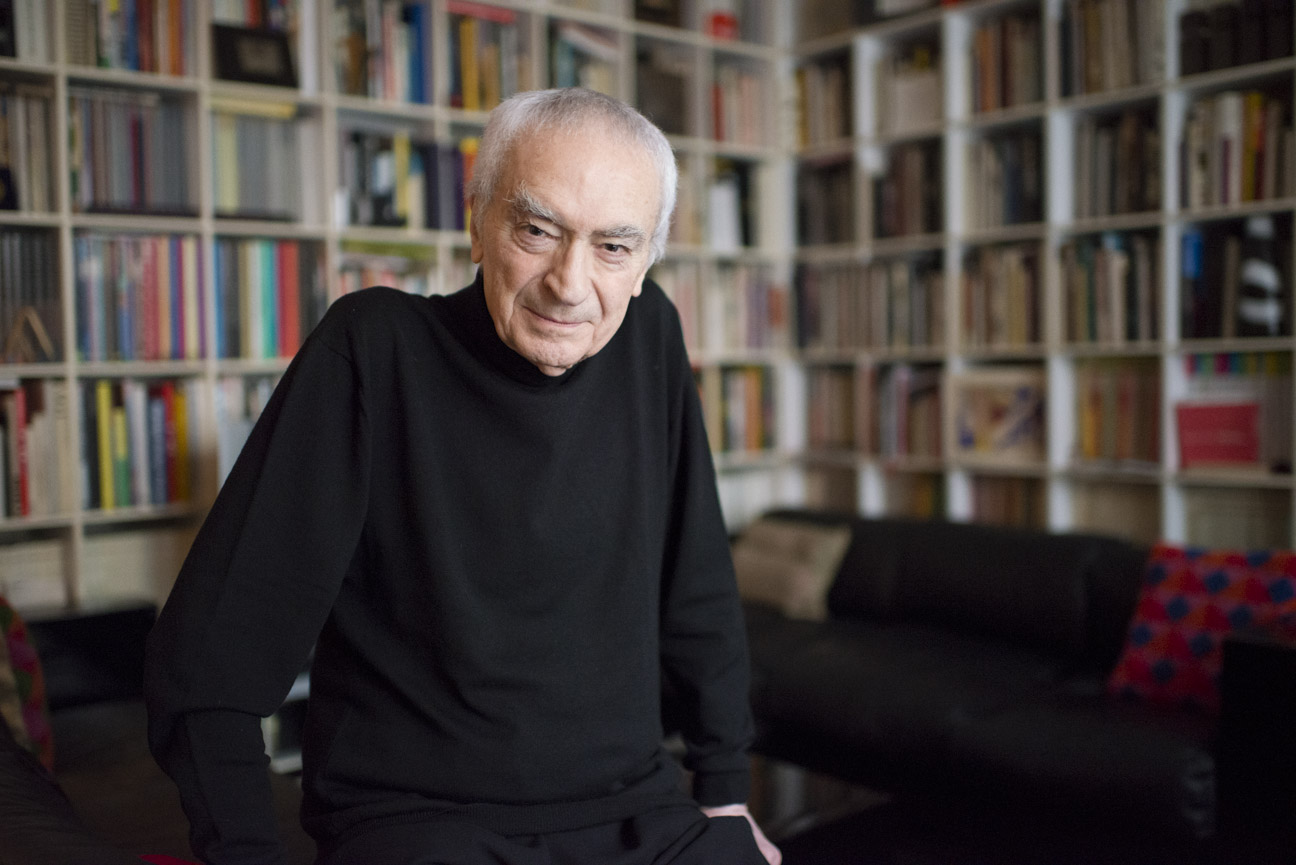
January 24, 2017
Recognizing the Designer’s Ego
In January 2015, before starting work at Continuum, I watched a documentary called Design Is One. (I had been a literary journalist and was taking my first steps into the world of design and needed to arm myself with information.) It is a wonderful portrait of Massimo and Lella Vignelli, the Heroes of Helvetica, the Virgils of the New York subway system, for decades the co-producers of an appealingly diverse and timeless stream of design work. As Lella, sadly, just died, and Massimo’s birthday was on January 10, the two designers and the documentary about their work have been on my mind lately.
For me, the most interesting element of the film was when octogenarian Massimo spoke about how his funeral would be held at Manhattan’s Saint Peter’s Lutheran Church, for which he and Lella designed the interior and various pieces of religious equipment.
“This is our favorite project in our lifetime,” he said while surveying Saint Peter’s. Then he added some amazingly specific funereal details: “When I die, this is the kind of thing I would like to have, with my catafalque right over there where the altar is. And then I would be moved to one of those columns by there, so forever, for as long as the place is going to be here, I will be here.”
So it was no surprise to me when Quartz published a piece on the anniversary of his death, “A legendary Italian designer designed his own funeral, and he didn’t miss a detail,” remembering the elaborate means Massimo took to design his own funeral.
What kind of ego, I thought, would it require to create such an elaborate design for one’s own funeral? A pretty substantial and complicated one, I concluded. But this got me thinking about the designer’s ego in general.
Since my first encounter with the Vignelli documentary, I’ve met and worked with many designers and have learned much about their personalities—and nearly all them distrust the idea of having a professional ego. (One of them spelled it out this way: Never be a diva.) To hazard a quick generalization: Designers, on the whole, are a humble lot; they have high standards and a great sense of professional pride, but they know the ethical and economic implications of bragging, and they avoid it.
There is in Massimo a healthy streak of ambivalence concerning ego. But, unlike many other designers, he recognized and admitted that there was a cold war rigorously conducted between his designer’s ego and his externally focused ethos. At several points in the documentary, Massimo talks about his own ego, which he jokingly refers to as “my brother.” This is, coming from a designer, extraordinary. When asked about their work, designers typically play down the idea of ego and talk instead, and exclusively, about utility, serving the user, serving the client, serving humanity—anything and everything but serving themselves.
Ego is traditionally the prerogative of, say, artists. Oscar Wilde might say, “All art is quite useless,” but the designer who claimed something similar for his work would soon be out of business. The designer is all about empathy and focused, creative problem-solving.
When it comes to Massimo’s ego, it’s hard not to love his honesty and confessional humor. A true egoist wouldn’t treat the subject in such lighthearted manner. Massimo admits that he has an ego—and that its influence can render him ridiculous.
It would be a challenge to find any of my colleagues thinking out loud about the design challenges of creating one’s own memorial service. It’s just too self-centered. But in the Quartz piece, the co-executor of Massimo’s “design will” said the service would be “his last gift to his friends”—and they quite likely have felt that the service was a gift…but reading it from the outside, it seems a rather self-involved project.
Could we say that Massimo was egocentric?
No. As Design Is One reveals, his ego was deeply involved, but other humans were at the center of it all. “What did I want to do in my life?” he asks in Design Is One. “I always wanted to affect the lives of millions of people. Through design.”
Massimo’s attitude nicely parallels that of James Joyce’s Stephen Deadlus, who argues for off-screen influence: “The artist, like the God of the creation, remains within or behind or beyond or above his handiwork, invisible, refined out of existence, indifferent, paring his fingernails.” Perhaps there’s more parallel between the designer’s ego and the artist’s ego than we’ve been prepared to admit…
There seems to be consensus that Massimo was a humble and sweet man—one former associate says he didn’t have a “mean bone in his body”—and it’s clear from his design philosophy that he sincerely cared about both the clients and humanity.
Many people in the design world either pretend to have a kind of egoless purity and a few, in stark contrast, use ego as the central element in their value proposition. Massimo’s attitude, or recognizing the ego’s role and diminishing it, seems the most complete and true one—one that all designers should notice and perhaps bring into their practice.
Observed
View all
Observed
By Ken Gordon
Related Posts

Design Impact
Seher Anand|Essays
Food branding without borders: chai, culture, and the politics of packaging

Graphic Design
Sarah Gephart|Essays
A new alphabet for a shared lived experience

Arts + Culture
Nila Rezaei|Essays
“Dear mother, I made us a seat”: a Mother’s Day tribute to the women of Iran

The Observatory
Ellen McGirt|Books
Parable of the Redesigner
Recent Posts
Food branding without borders: chai, culture, and the politics of packaging Why scaling back on equity is more than risky — it’s economically irresponsible Beauty queenpin: ‘Deli Boys’ makeup head Nesrin Ismail on cosmetics as masks and mirrors Compassionate Design, Career Advice and Leaving 18F with Designer Ethan MarcotteRelated Posts

Design Impact
Seher Anand|Essays
Food branding without borders: chai, culture, and the politics of packaging

Graphic Design
Sarah Gephart|Essays
A new alphabet for a shared lived experience

Arts + Culture
Nila Rezaei|Essays
“Dear mother, I made us a seat”: a Mother’s Day tribute to the women of Iran

The Observatory
Ellen McGirt|Books

